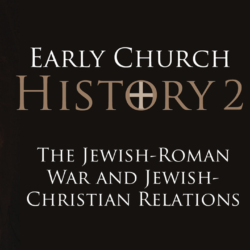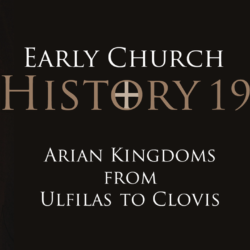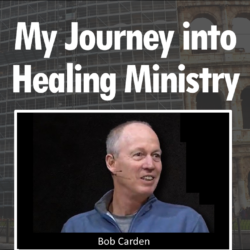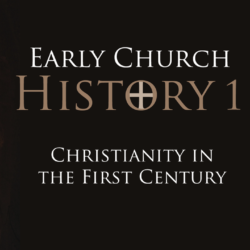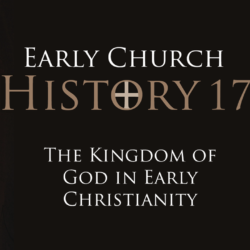In this sprint through British church history, you’ll learn about King Henry VIII and his staggering Act of Supremacy when he pulled the Church of England out of Catholicism and appointed himself the head of the church. After Henry’s death, England swayed back and forth as Henry’s successors adopted Protestantism then Catholicism then Protestantism again. Still none of this tumult compares to the chaos of the English Civil War a century later when a Protestant Parliament executed a too Catholic King Charles I for treason and initiated stringent Puritanical laws throughout the land. You’ll also learn about the persistent and tenacious John Knox who was instrumental in bringing the Reformation to Scotland.
This is lecture 9 of a history of Christianity class called Five Hundred: From Martin Luther to Joel Osteen.
All the notes are available here as a pdf.
—— Notes ——
Henry VIII (1491-1547)
- Wives, Heirs
- Catherine of Aragon (m. 1503), mother of Mary Tudor
- The Great Issue: could not divorce her to marry mistress Ann Bolin
- 1534: Act of Supremacy (Henry declared “Supreme Head” of the church
- Ann Bolin (m. 1533), mother of Elizabeth
- Jane Seymour (m. 1536), mother of Edward
- Anne of Cleves (m. 1540)
- Catherine Howard (m. 1540)
- Catherine Parr (m. 1543)
- Religious Policies
- Ostensibly Catholic, apart from his great issue (Cardinal Wolsey)
- Dissolution of monasteries and shrines
- 200 hangings of people who resisted Henry’s royal assertions as head of the church
- Six Articles (1539) affirmed traditional Catholic understandings of
- Transubstantiation, no cup for laity during communion, chastity for clergy, private Masses, confession
William Tyndale (1495-1536)
- Languages: Greek, Latin, French, German, Spanish, Italian, English
- 1521 – ordained a Catholic priest
- 1522 – he was called before John Bell—chancellor of the diocese of Worcester but was released
“We were better to be without God’s laws than the pope’s.” Master Tyndale, hearing this, full of godly zeal and not bearing that blasphemous saying, replied, “I defy the pope, and all his laws;” and added, “If God spared my life, ere many years I will cause a boy that driveth the plough to know more of the Scripture than thou doest.”
- 1523 – he went to Bishop Cuthbert Tunstall to ask permission to translate the Scriptures
- 1524 – he fled England to the continent possibly to study at Wittenberg (12 years a fugitive)
- 1525 – he finished the NT
- 1526 – the NT was printed in Worms and Antwerp
- 1526 – Tunstall had as many copies as he could find publicly burned
- 1529 – Cardinal Wolsey condemned Tyndale as a heretic
- 1530 – he finished the Torah (Gen-Deut)
- 1530 – he wrote The Practice of the Prelates, opposing Henry VIII’s divorce as unscriptural
- 1531 – he finished Jonah
- 1534 – a new edition of the NT published (thoroughly revised)
- 1535 – Henry Philips gained Tyndale’s trust and friendship and betrayed him to the authorities.
Letter from Tyndale to overseer of the castle in September: “I believe, most excellent Sir, that you are not unacquainted with the decision reached concerning me. On which account, I beseech your lordship, even by the Lord Jesus, that if I am to pass the winter here, to urge upon the lord commissary, if he will deign, to send me from my goods in his keeping a warmer cap, for I suffer greatly from cold in the head, being troubled with a continual catarrh, which is aggravated in this prison vault. A warmer coat also, for that which I have is very thin. Also cloth for repairing my leggings. My overcoat is worn out; the shirts also are worn out. He has a woolen shirt of mine, if he will please send it. I have also with him leggings of heavier cloth for overwear. He likewise has warmer nightcaps: I also ask for leave to use a lamp in the evening, for it is tiresome to sit alone in the dark.But above all, I beg and entreat your clemency earnestly to intercede with the lord commissary, that he would deign to allow me the use of my Hebrew Bible, Hebrew Grammar, and Hebrew Lexicon, and that I might employ my time with that study. Thus likewise may you obtain what you most desire, saving that it further the salvation of your soul. But if, before the end of winter, a different decision be reached concerning me, I shall be patient, and submit to the will of God to the glory of the grace of Jesus Christ my Lord, whose spirit may ever direct your heart. Amen.”
- 1536 – Tied to a stake, strangled by executioner, and then burned
- Last words: “Lord open the king of England’s eyes”
- Three years later, the King and archbishop signed off on Coverdale’s Bible
Edward VI (r. 1547-1553)
- Council ruled in his name since he was never of age
- Supported more Protestant teachings
- Allowed printing of Protestant propaganda
- Protestant literature exploded
- Book of Common Prayer (1549, 1552)
- 42 Articles (1553): English confession similar to Augsburg Confession of Luther
- Abolished clerical celibacy
- Abolished Mass (Thomas Cranmer was behind this)
Mary Tudor (r. 1553-1558)
- Tried to re-establish Catholicism
- People fled to the continent
- Geneva Bible 1560
- Executed 282 Protestant s (hence, the name bloody Mary)
- John Foxe’s Acts and Monuments (known as Foxe’s Book of Martyrs) documents many of these and was written during this time
- Married Philip II, king of Spain (undermined popular support)
Elizabeth (r. 1558-1603)
- Raised Protestant (like her mother)
- Started religious reforms immediately
- Act of Uniformity (1559): reestablished Church of England
- Changed title from “supreme head” to “supreme governor,” which meant the same but was less theologically offensive
- Book of Common Prayer (1559)
- Thirty-Nine Articles (a revision of Edward’s Forty-Two Articles)
- Reformed Position on Lord’s Supper with no real presence
- Moderate religious policy
- Executed fewer people in 45 years than Mary did in 5
- Calvin (d. 1564) considered Elizabeth’s England as a true reformed church, yet not as pure as one would desire
- Via Media: middle way between Lutheran and Reformed, though
- Puritans were those who wanted to purify the C of E to be more Reformed/Calvinist (believed reformation was not yet complete in England)
- Wanted more preaching in worship
- Wanted education/catechetical instruction
- Wanted to eliminate traditional vestments, postures, gestures, images, and statues in churches
James (r. 1603-1625)
- In the 1610s and 1620s, Arminianism came to England from Holland
- Jacobus Arminius (1560-1609)
- 1618-1619 – Synod of Dort condemned Arminius’ teachings and defined the 5 points of Calvinism (TULIP) we know today
- A century later, John Wesley agreed with Arminius, and it is one of the dominant theological systems in the US today b/c of his influence
- James did not fight against this Arminianism
- Authorized revision of the Bishop’s Bible in 1611
- Intended to counteract popular and anti-monarchical Geneva Bible
- No marginal notes
- Kings free from restraint (absolute rule) b/c God put them in this position
Charles I (r. 1625-1649)
- Angered the Puritans by marrying a French Catholic, filling vacant bishoprics w/ Arminians, Attacking Calvinism, openly tolerating Catholics at his court, and having clergy wear white gown
- Tried to do everything without involving Parliament (no Parliament from 1629-1640)
- Raised taxes to pay for a war with Scotland
- Had to call Parliament to session
- They never disbanded for years (1640-1653)
- 1641 – Presbyterians split from Puritans b/c they want to get rid of bishops
- 1642-1646 – first civil war (between royalists and parliamentarians)
- 1646 – Parliament wins and captures Charles I
- Westminster Confession (1646)
- Parliament adopts this Calvinist statement instead of 39 articles
- 1647-1649 – tremendous turmoil ended with execution of Charles I, abolition of the monarchy, and abolition of the House of Lords (House of Commons had all power)
Commonwealth (1649-1660)
- 1649-1658 – Oliver Cromwell is primary political leader (called “Lord Protector” 1653-8)
- He was the military leader of parliamentary army
- Cromwell was a Congregationalist
- 1654 – established a state church w/o book of common prayer
- More tolerant than Presbyterian church of 1646
- Readmitted Jews to England (first time since 13th)
- 1640s-1650s – tolerance allows unprecedented proliferation of radical groups
- Cromwell died of natural causes
- Puritan Parliament
- Sabbath on Sunday (no tennis, no theatre going, etc.)
- Unpopular with population
- Two years later, people restored monarchy to Charles II
Charles II (r. 1660-1685)
- Restored Parliament; persecuted Puritans
- BCP restored: determined C of E’s liturgy
- Favored Catholicism, though popular sentiment was against him
- Swear allegiance to the king
James II (r. 1685-88)
- Wanted greater toleration because he was a Catholic
William (r. 1689-1702) & Mary (r. 1689-1694)
- Parliament invites William of Orange (Dutch king) to invade England and take over
- James flees, and William becomes king of England
- King’s power henceforth limited by Parliament
- 1689 Toleration Act
- Have to accept William & Mary
- Have to accept 39 articles
- No worries about polity (Episcopalian, Presbyterian, Congregationalist, etc.)
Scotland
- 1559-1560 – reformation occurs in Scotland
- Three causes
- 1) Slow growth of Protestantism in previous decades
- 2) Dynastic politics and international relations
- 3) Preaching and insistence of John Knox (1514?-1572)
- 1520s – Protestantism first arrived in Scotland
- 1546 – Cardinal David Beaton persecuted Protestants
- 1547 – John Knox is involved in takeover of St. Andrews Castle in retaliation against Beaton
- Captured by French and becomes a galley prisoner for 2 years
- 1549 – Knox released by French and goes to England
- 1552 – objects to prayer book and refused a bishopric during Edward’s reign
- 1553 – when Mary came to power, Knox fled to Geneva to spend time with Calvin
- 1555-1556 – Knox visits Scotland and spurs on Protestants
- 1556 – kicked out of Scotland and burned in effigy by Scottish bishops
- 1558 – published radical treatises justifying political resistance to an ungodly ruler
- 1558 – Mary Stuart (Queen of Scots) married French prince Francis II
- Caused some people to worry about French takeover of Scotland
- 1559 – Knox came back to Scotland and preached against Catholicism (associated w/ French)
- 1559 – King Henry II of France died along with Francis II, leaving the country in turmoil
- 1560 – Elizabeth sends an army to Scotland, which gives support to Scottish Reformation Parliament to establish Calvinist Protestantism
- 1561 – Mary Stuart returned to Scotland and couldn’t change things
- She remained a Catholic, and her court was Catholic
- But accepted the Protestant order
—— Links ——
- For more on the history of Asian Christianity see The Lost History of Christianity: The Thousand-Year Golden Age of the Church in the Middle East, Africa, and Asia–and How It Died by Philip Jenkins
- See all the episodes of Five Hundred: From Martin Luther to Joel Osteen.
- The three main textbooks for this class include:
- The European Reformations by Carter Lindberg
- The Radical Reformation by George Williams
- Modern Church History by Tim Grass
- Check out these other Restitutio historical podcasts
- Intro music: “District Four” by Kevin MacLeod. Licensed under Creative Commons: By Attribution 3.0 License.

